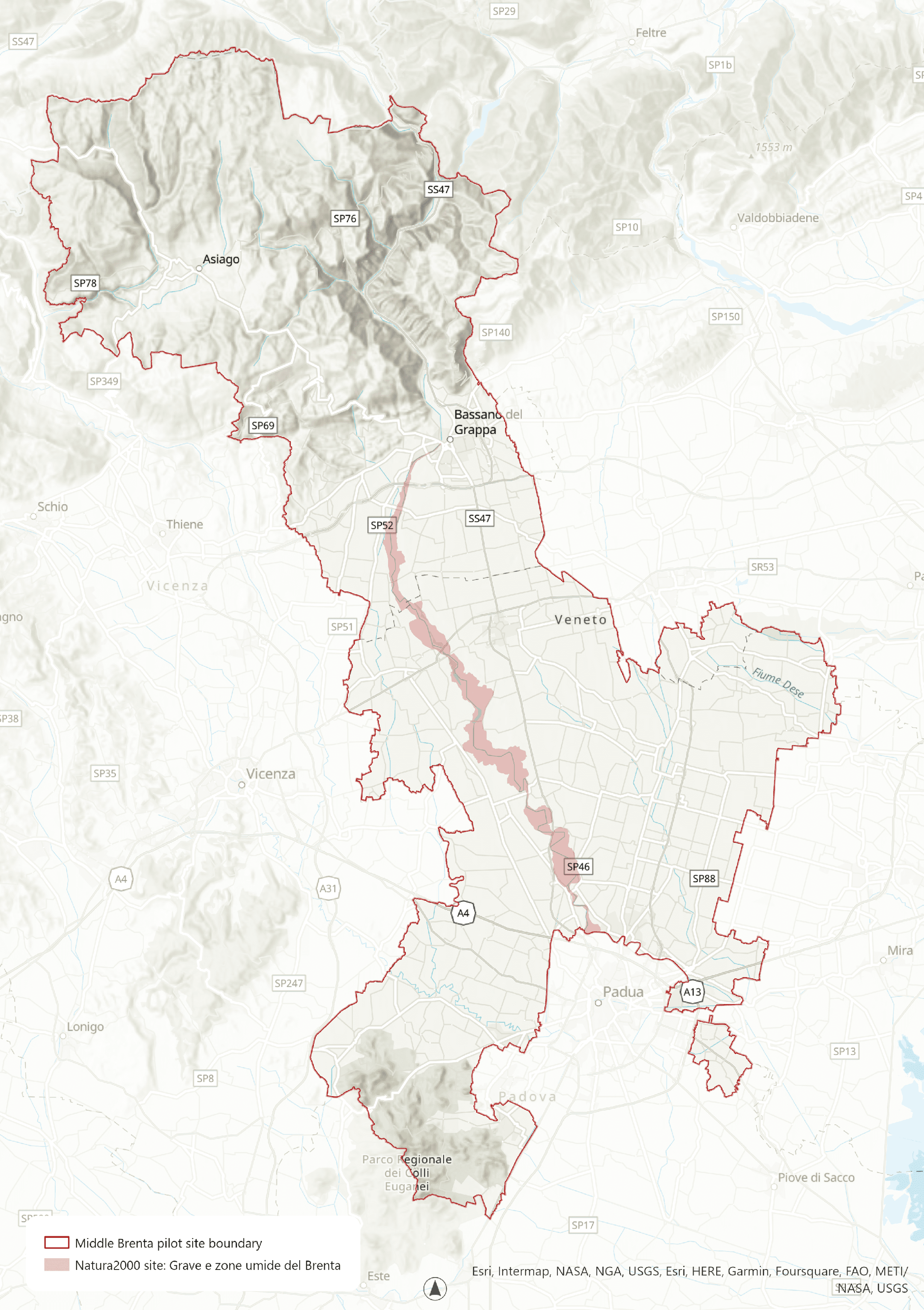PS#2: Brenta (IT)
This page is also available in Italian ![]()
Led by CBB and ETIFOR


Description of the area
The middle basin of the Brenta river is located in the Veneto region, in the northeast of Italy. The Consiglio di Bacino Brenta represents 68 municipalities across the provinces of Vicenza and Padova. The focus area is the riverine context (Natura 2000 site, 3.848 ha of riparian forests, wetlands and aquatic habitats, within 15 municipalities) where several water withdrawals by ETRA water utility are imposing direct impacts for farming, which is the primary economic activity and Natura 2000 ecosystems, which suffers for water abstraction and lack of management. The groundwater of the Brenta basin is being distributed across the Region by ETRA, serving more than 1.5 million people. Thousands of people use the Natura 2000 for recreational purposes During a LIFE project (LIFE Brenta 2030) several conflicts but also positive synergies between water and biodiversity management have been identified.
Main water governance challenges
Full implementation of the Environmental and Resource Costs (ERC) into the water tariff system (polluter/user-pays principle, art. 9 WFD) as a key economic instrument to ensure a "good" governance and sustainable management of the water safeguard areas, as well as for the Natura 2000 site where the water abstractions take place. Creation of a participatory management and stakeholders Committee to ensure integrated water and Natura 2000 management, involving the water sector, municipalities, citizens, farmers and key stakeholders.
Key stakeholders
Consiglio di Bacino Brenta (Water Board), ETRA (local multiutility, drinking water and garbage operational company), Consorzio di Bonifica Brenta (reclamation consortium for the agricultural sector) Regione Veneto (regional authority), 15 local municipalities., environmental associations (Legambiente) and citizens groups
InnWater governance innovation
- Promote an integrated governance of water and biodiversity through a participatory and innovative consultation management Committee;
- Apply the ERC costs in the drinking water tariff and explore the possibility to apply the polluter/user-pays principle also in other water sectors (e.g. agriculture);
- Inform and effectively communicate the meaning and amount of ERC component to the households/ water users.
- Assessment of the synergies between water and biodiversity governance;
- Renovation of the user advisory committee if the Water Board to enhance associations, groups and citizens representation and participation in the local water planning;
- Smartphone app for the households of the drinking water sector with a section dedicated to the ERC and the impact they have on the protection of quality and quantity of water resources, as well as conservation of biodiversity.
